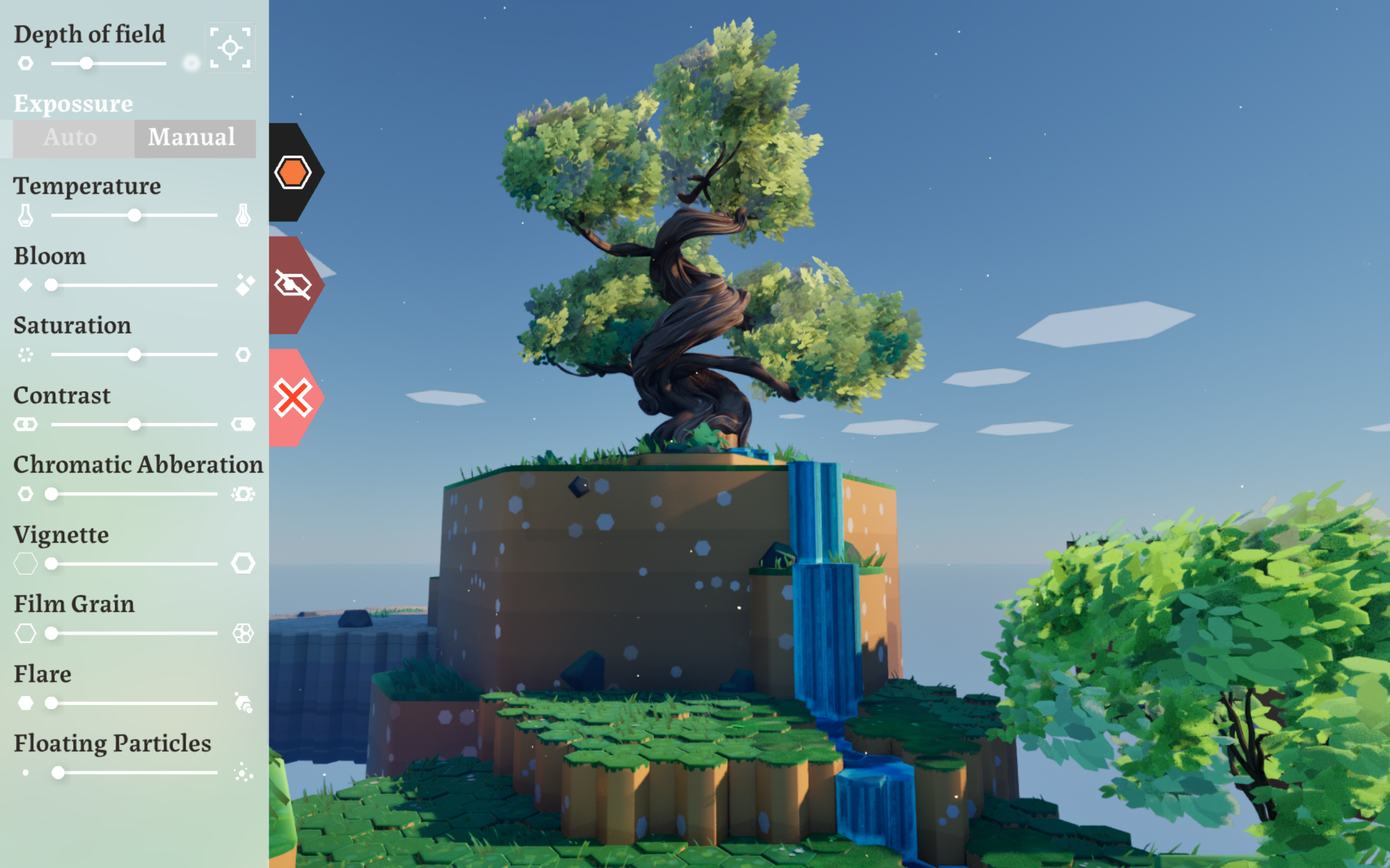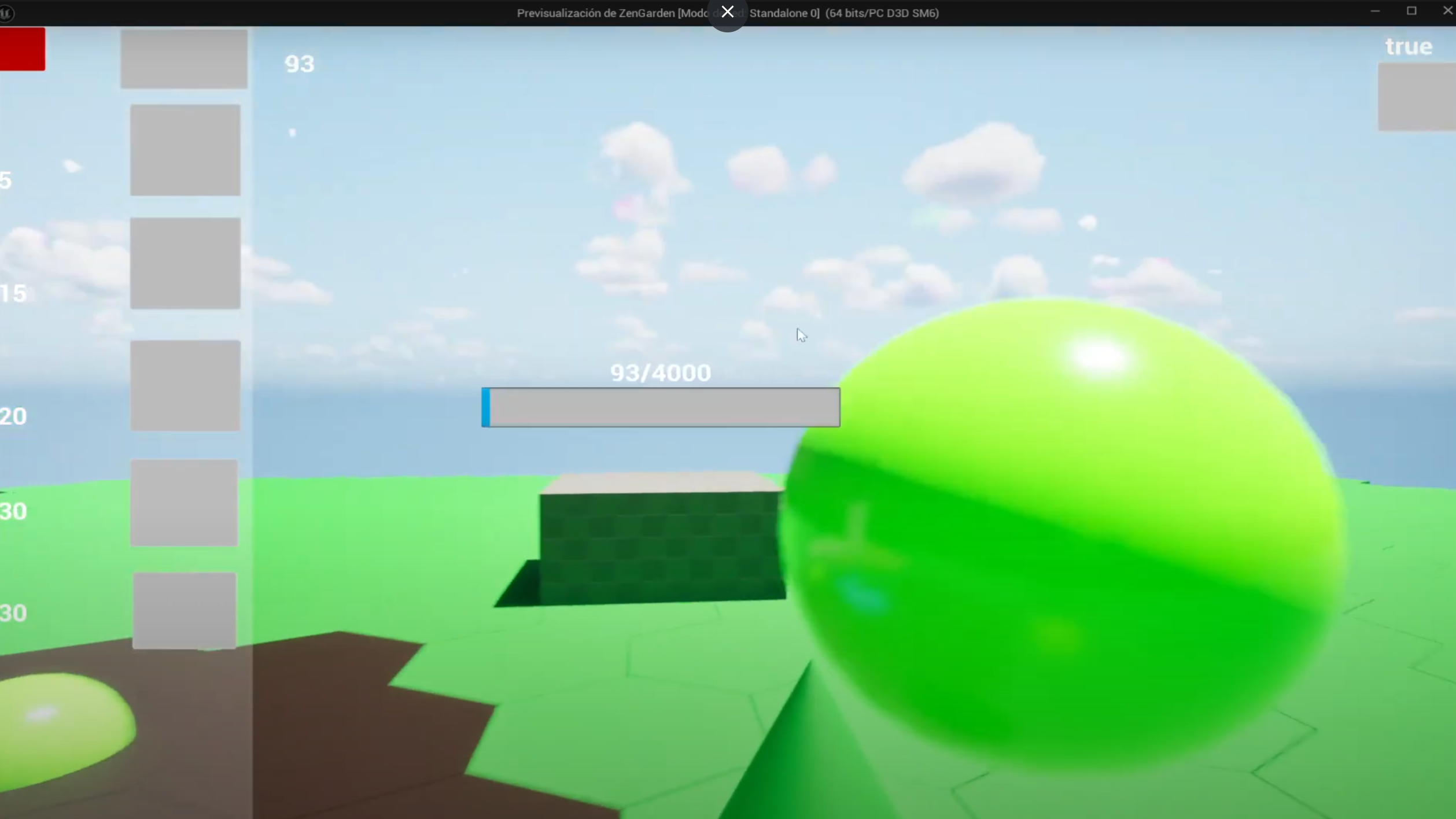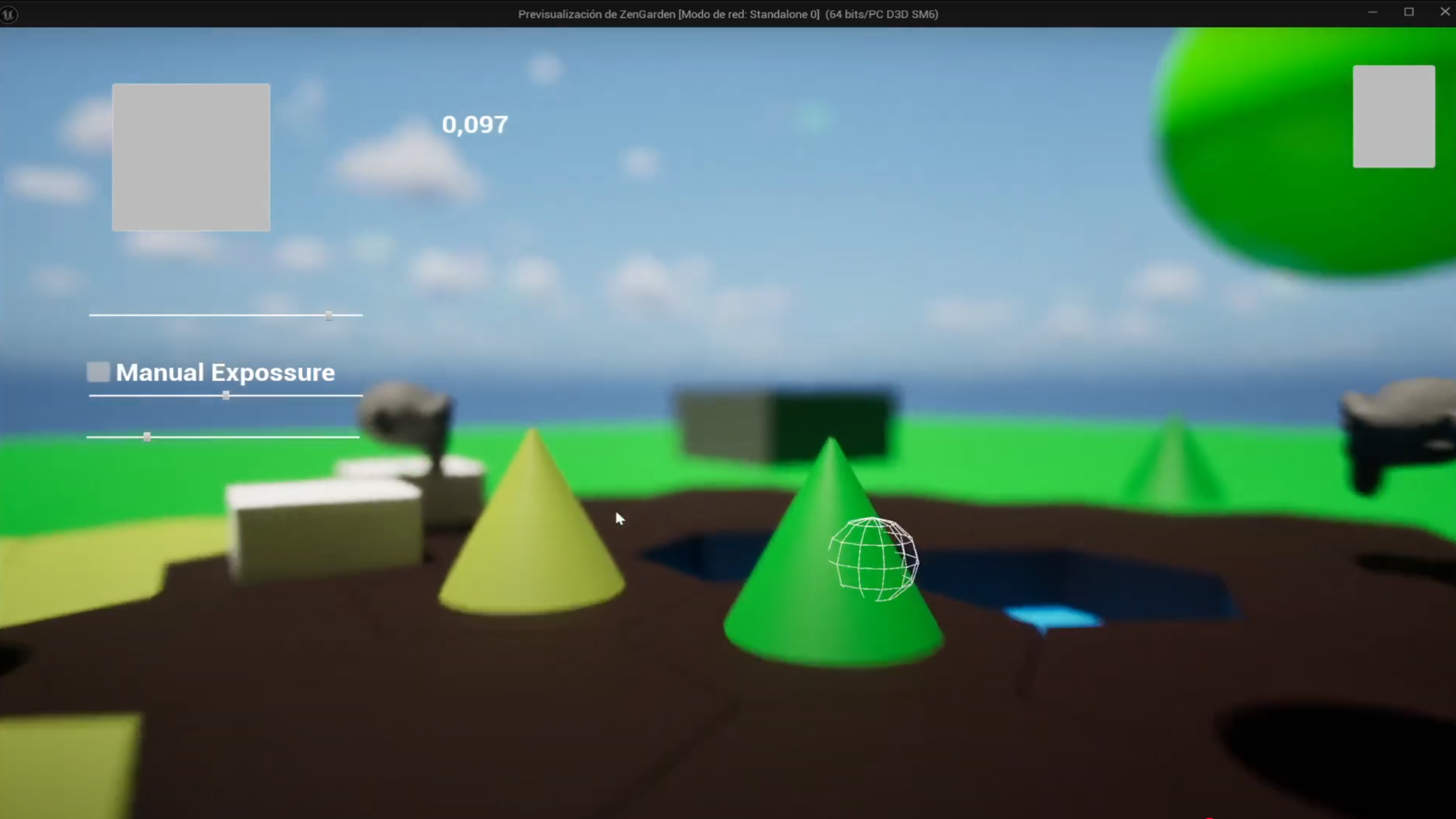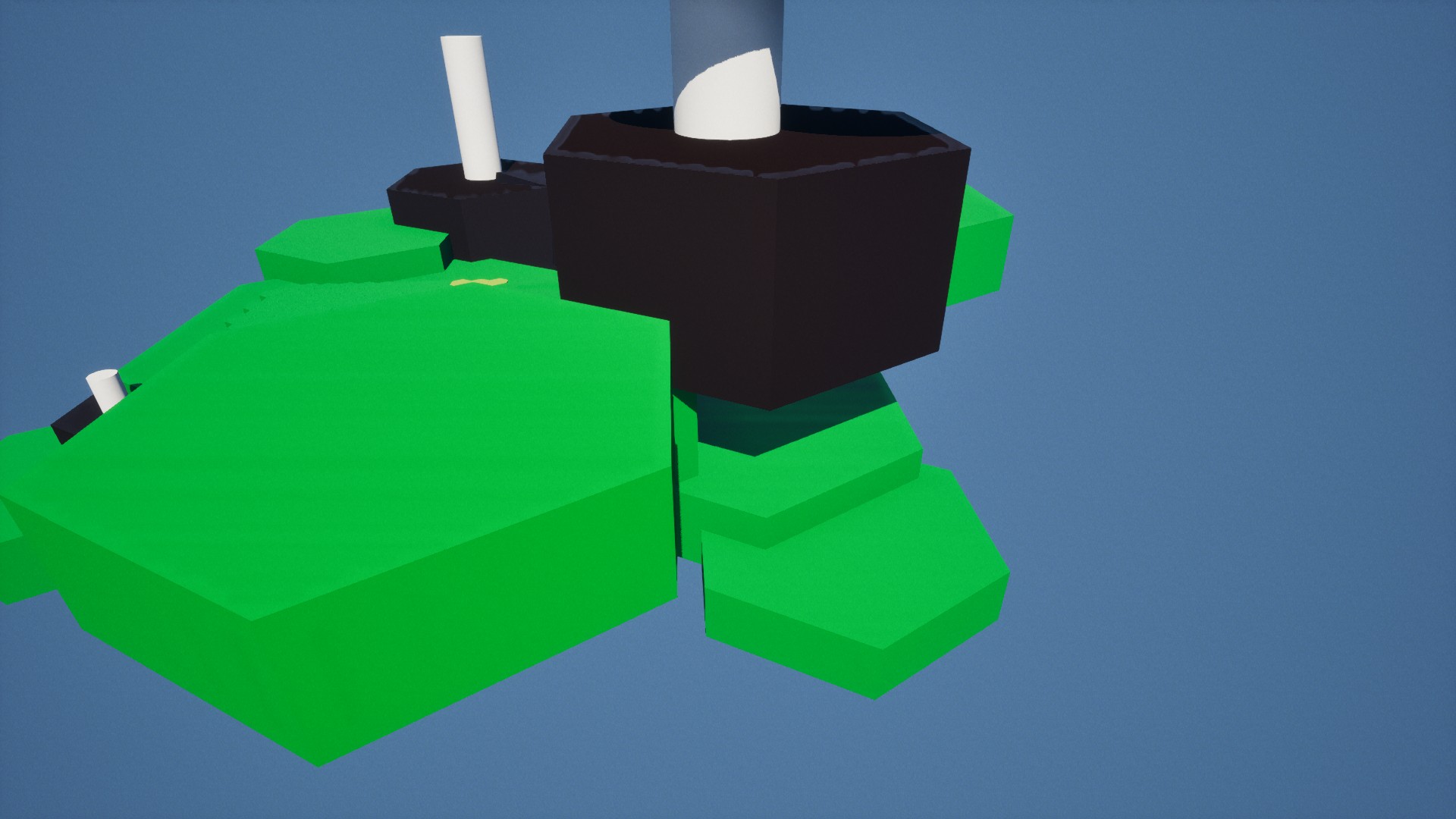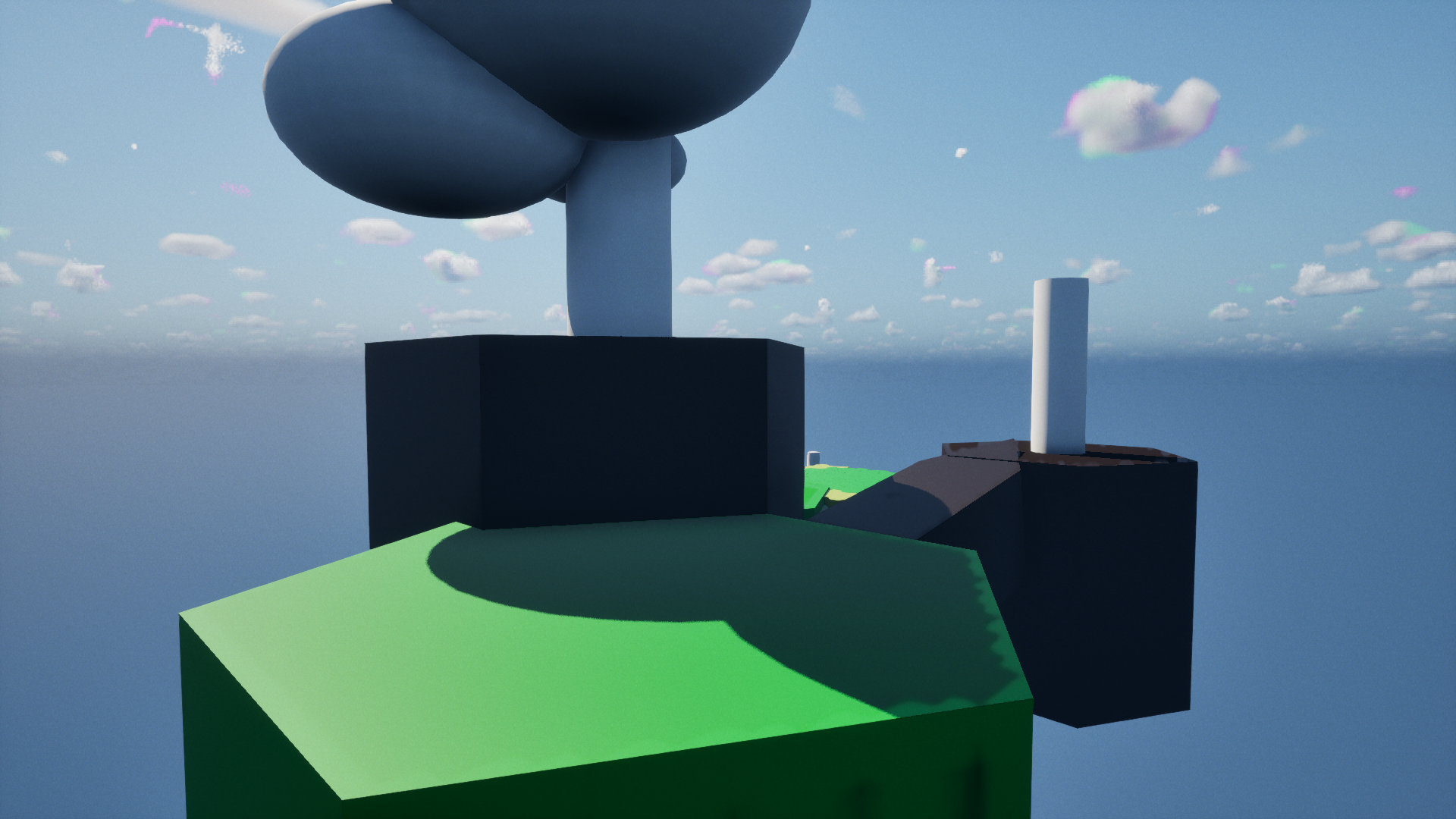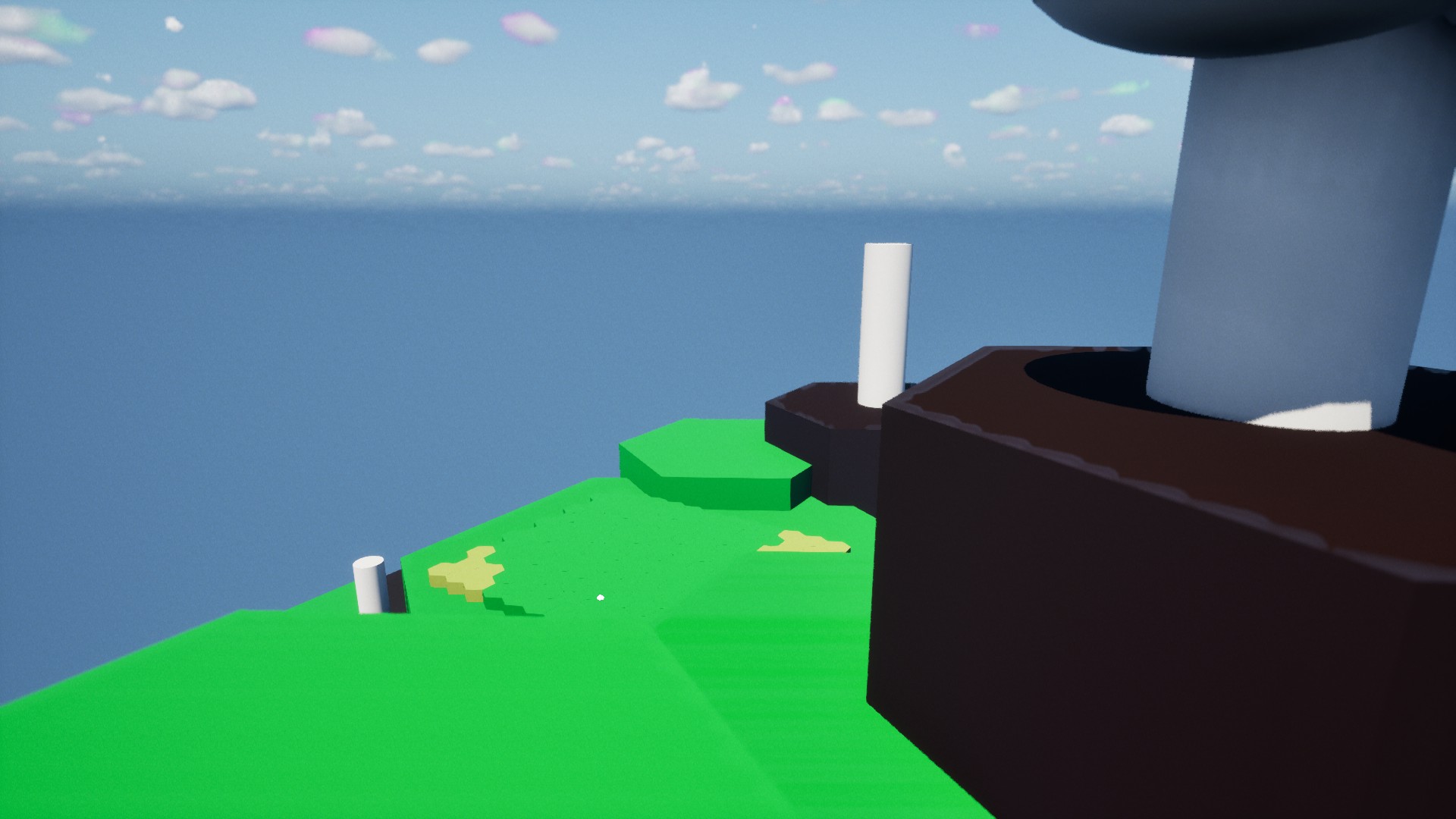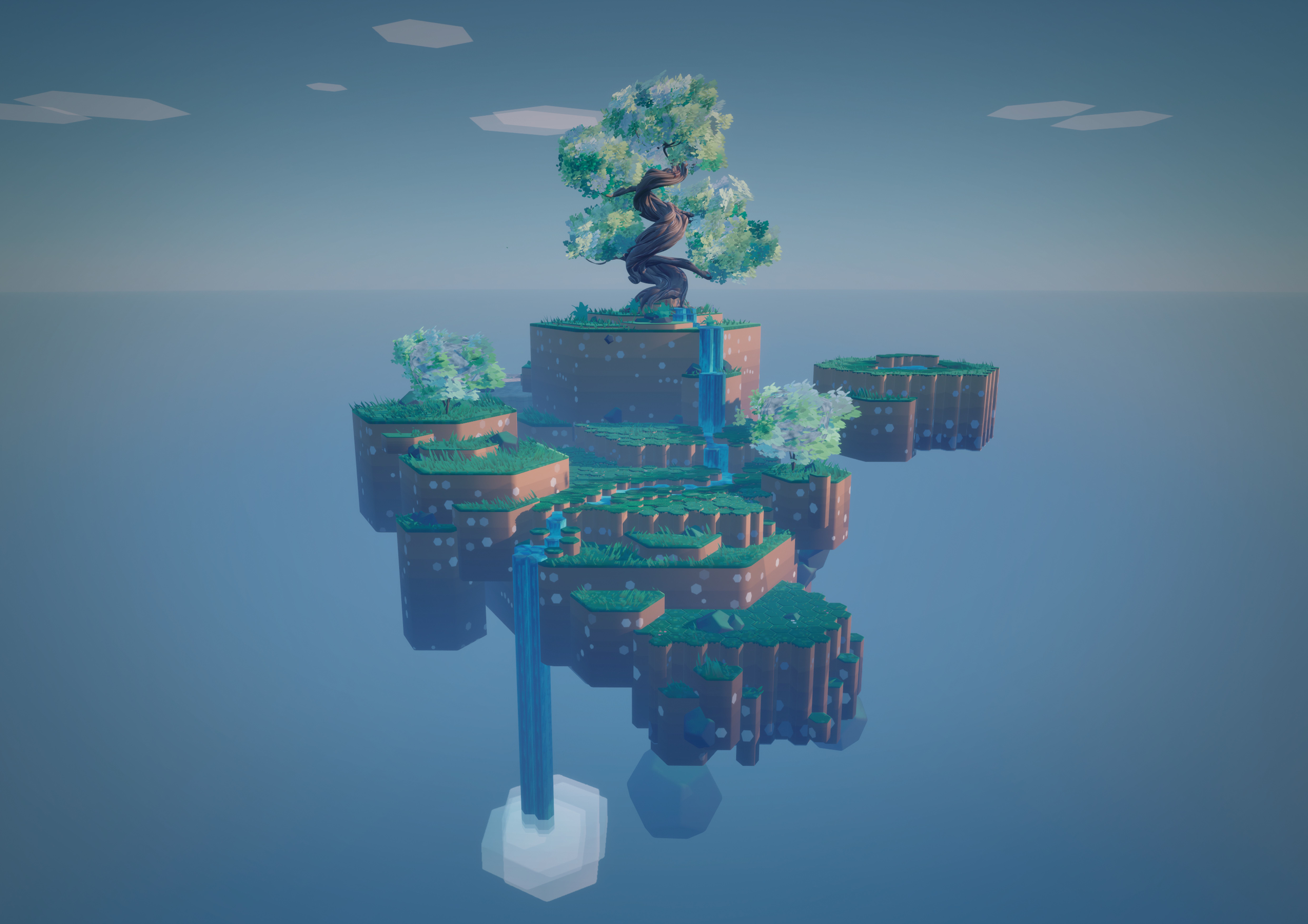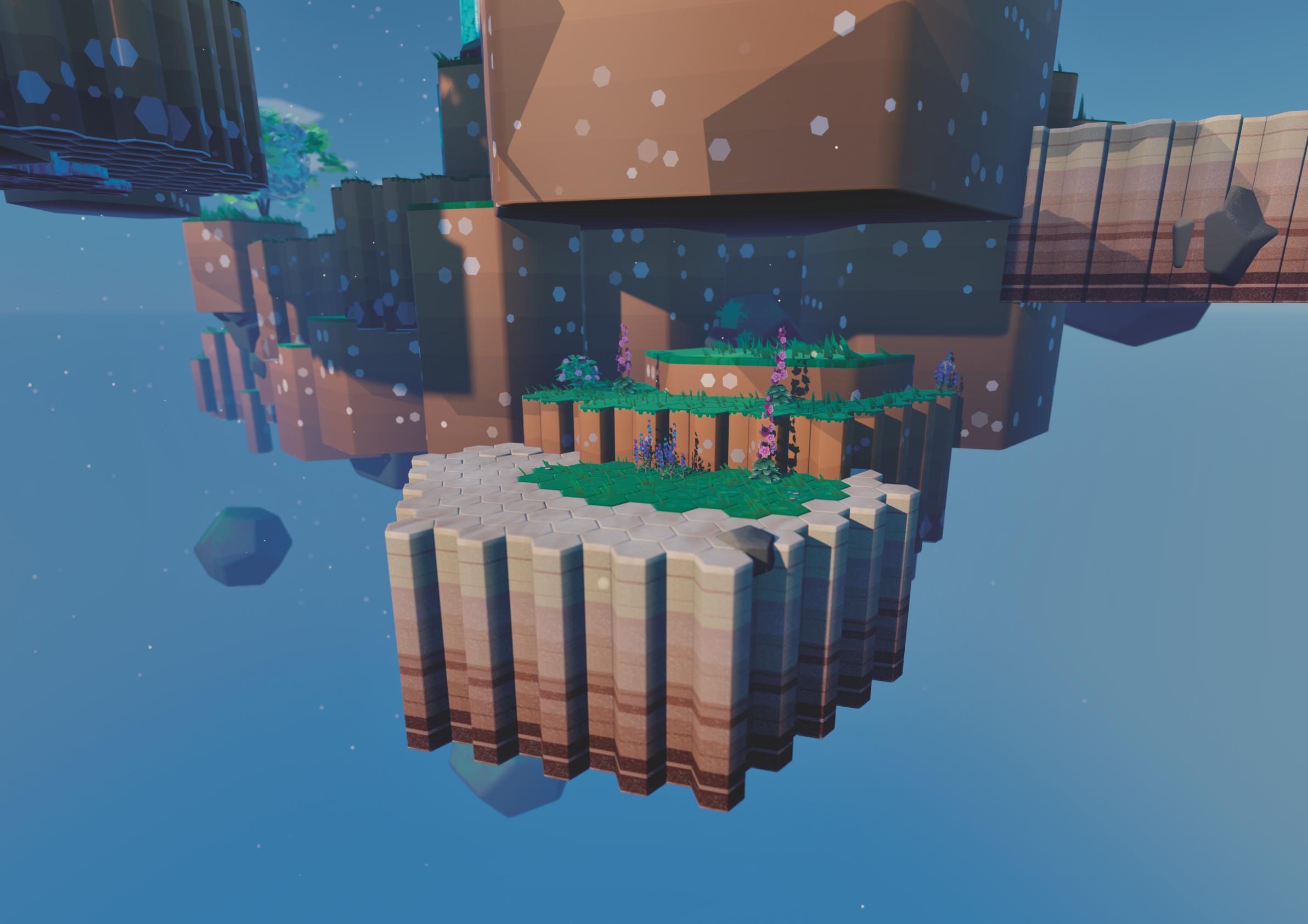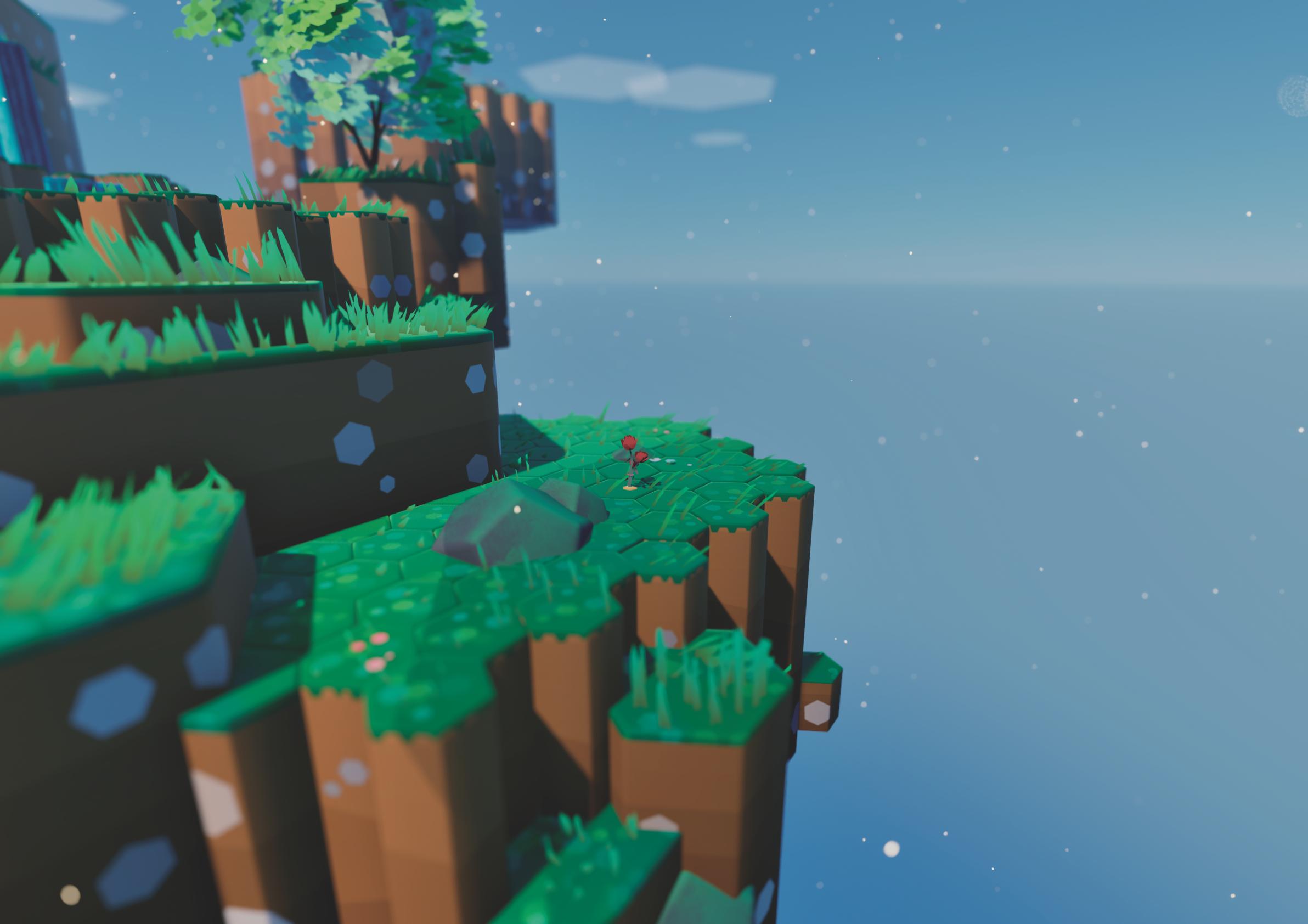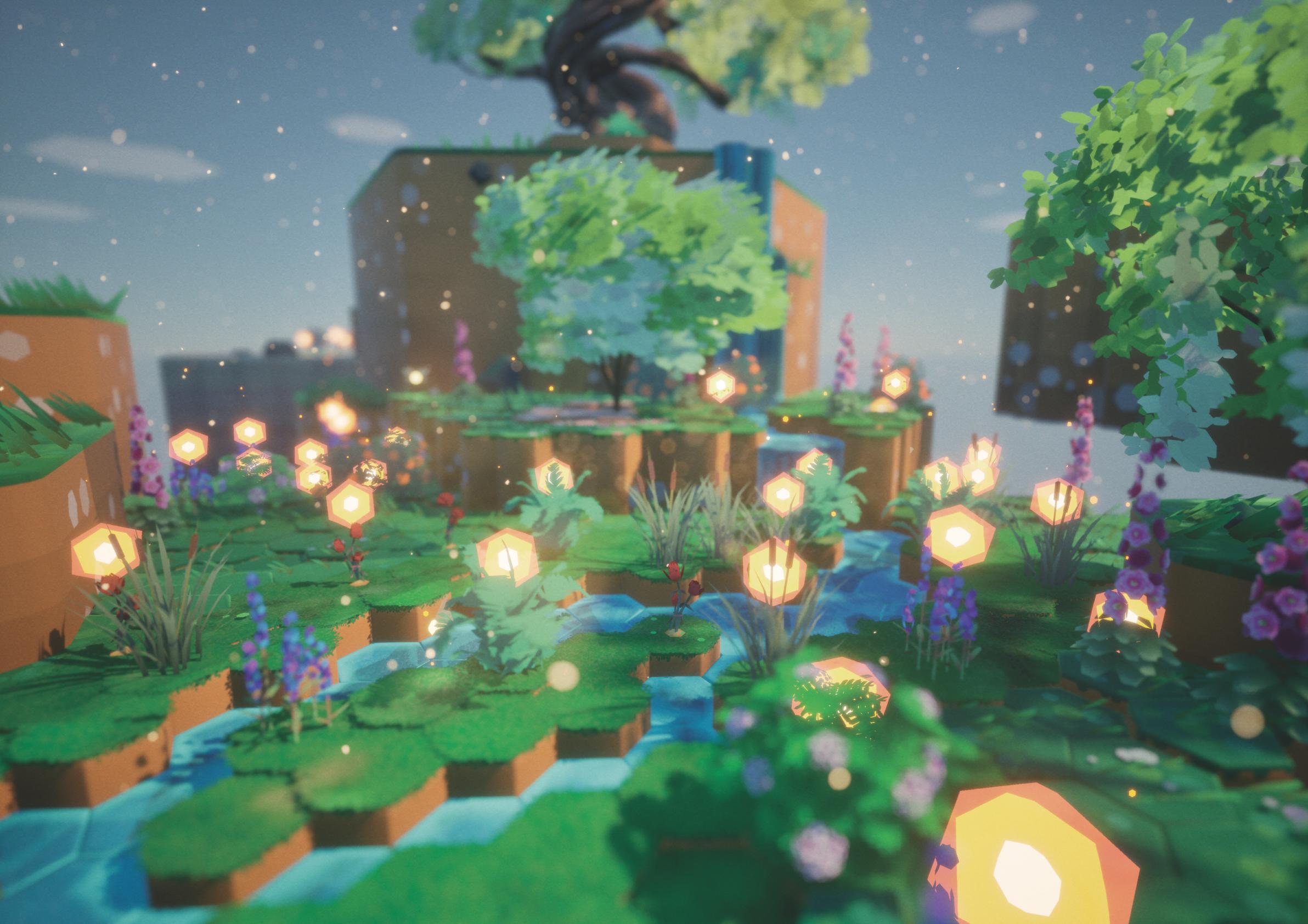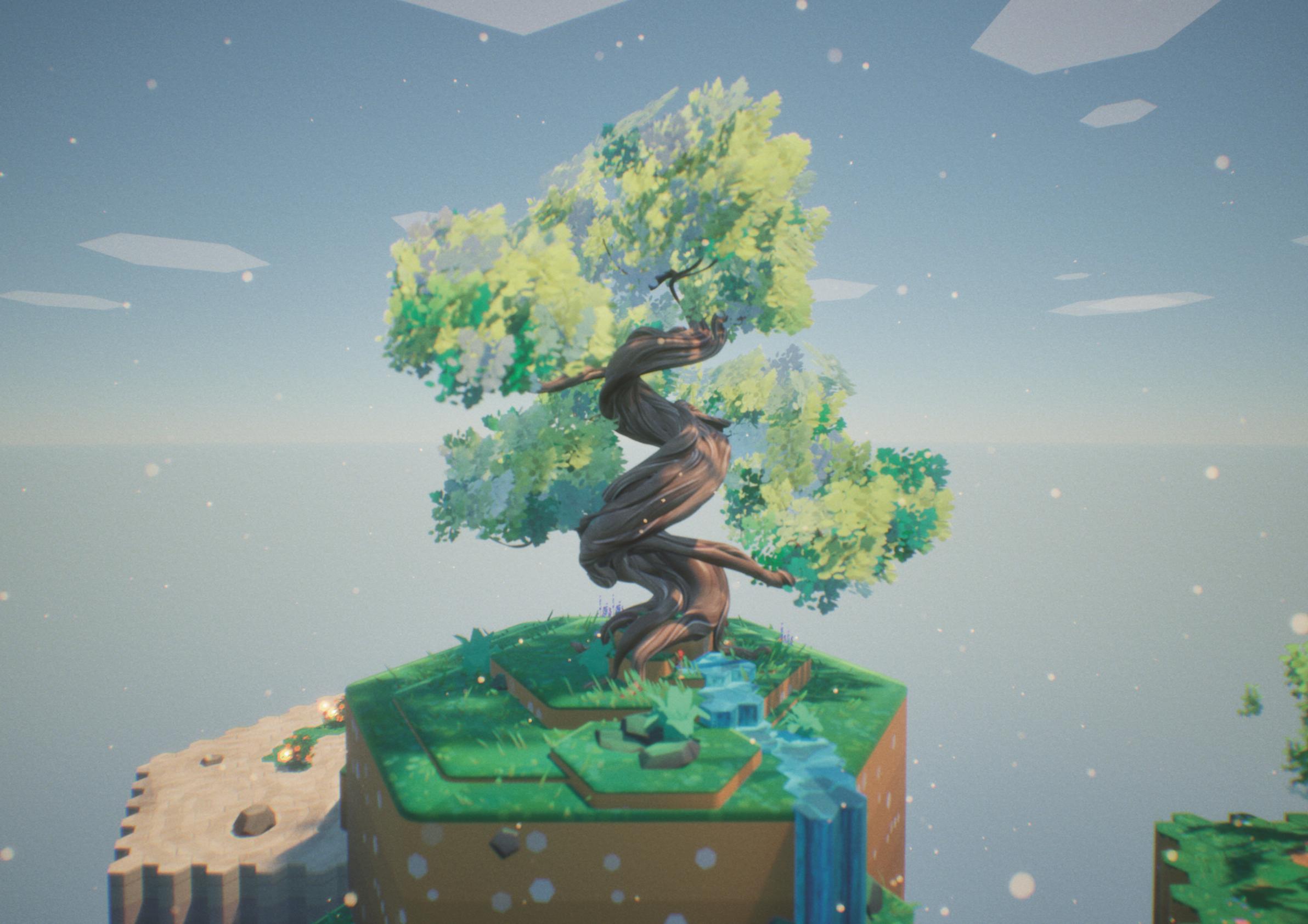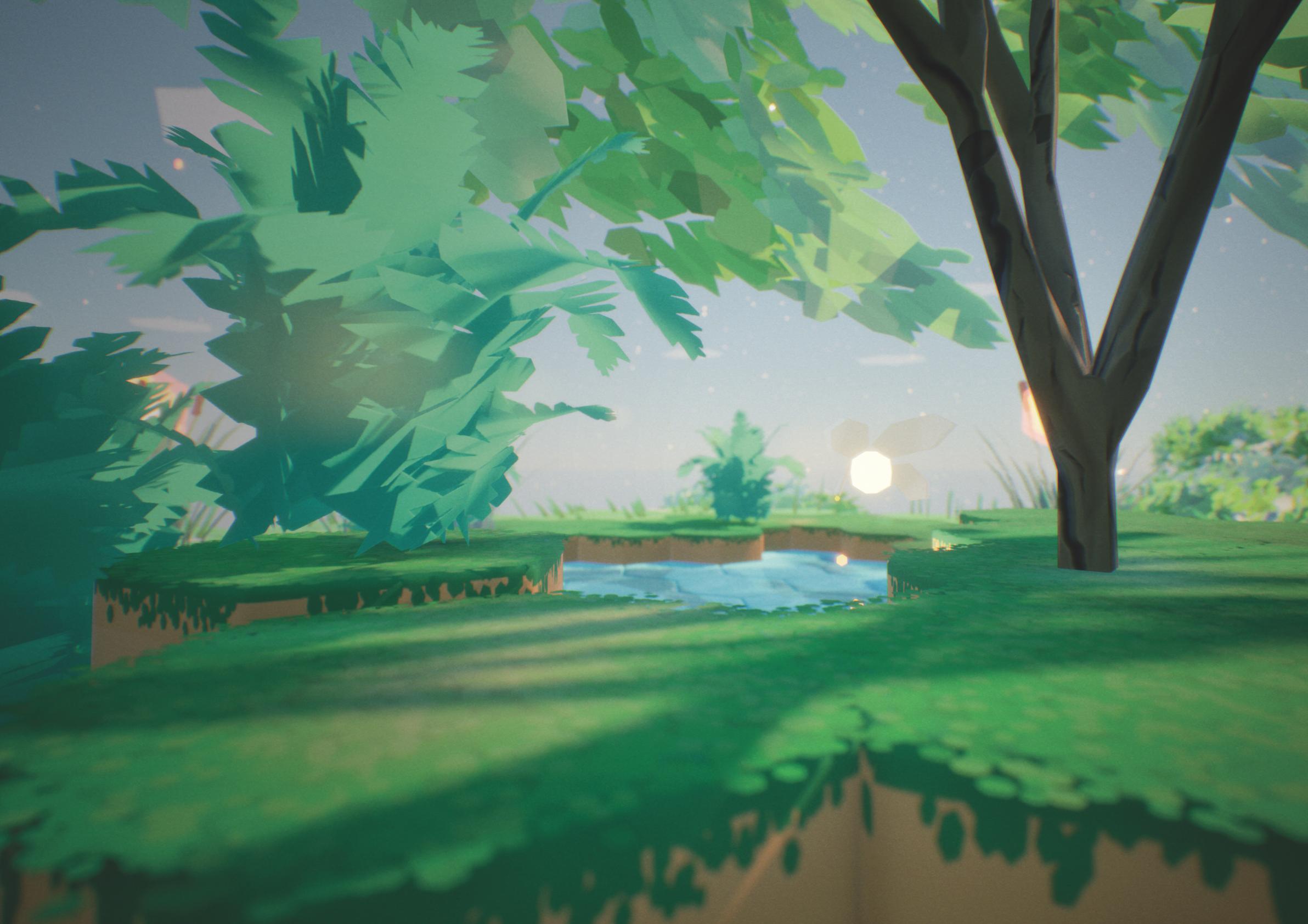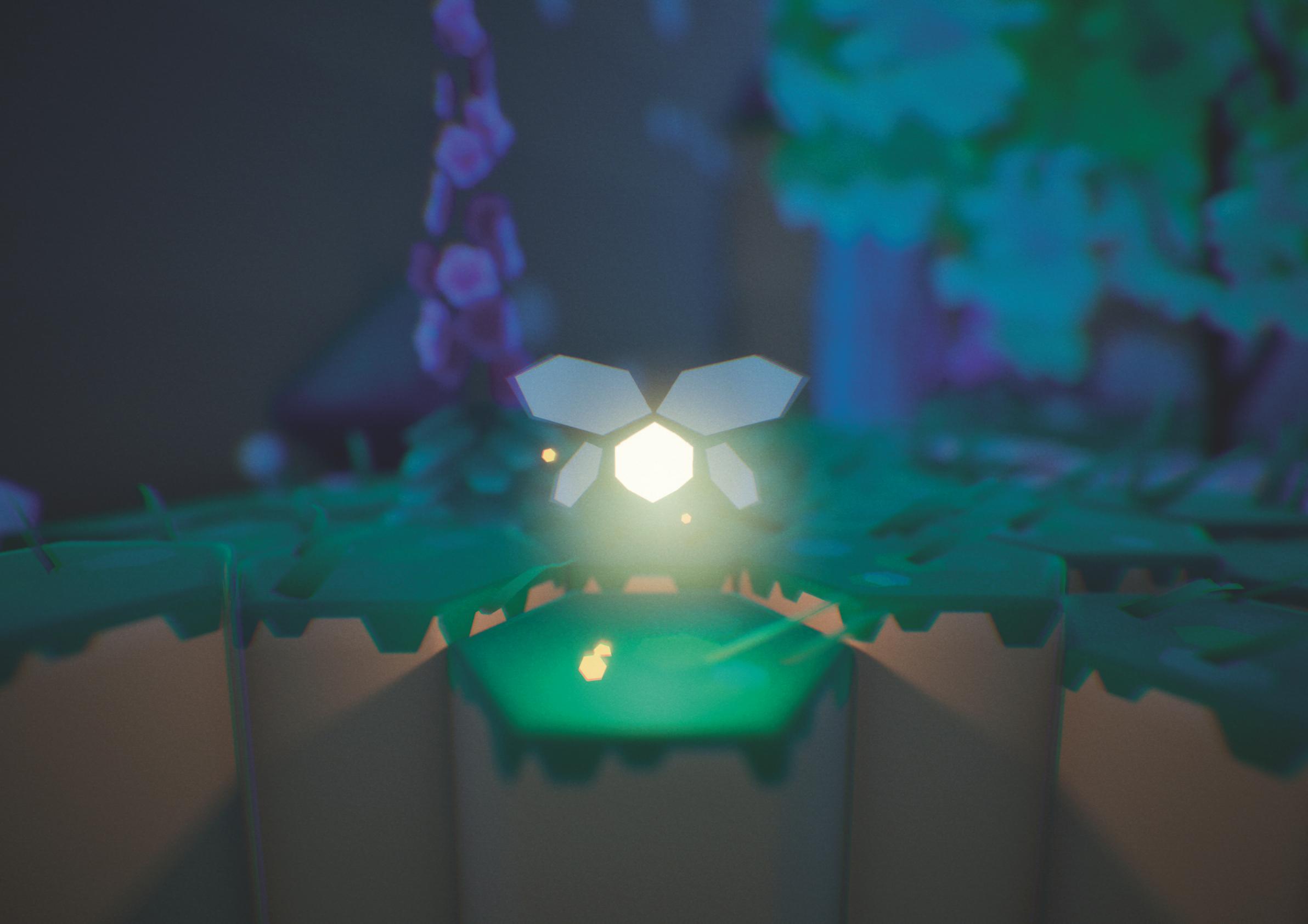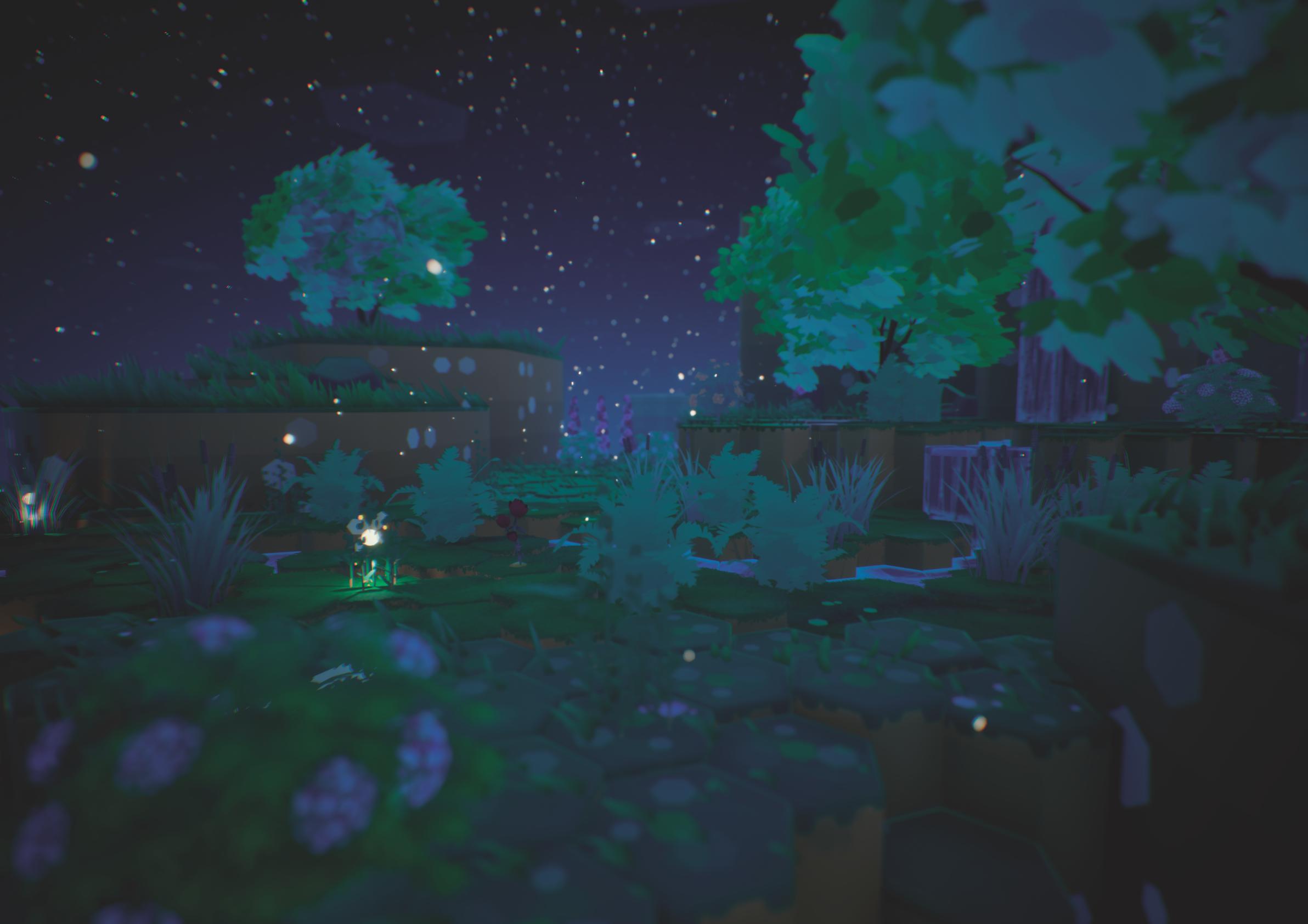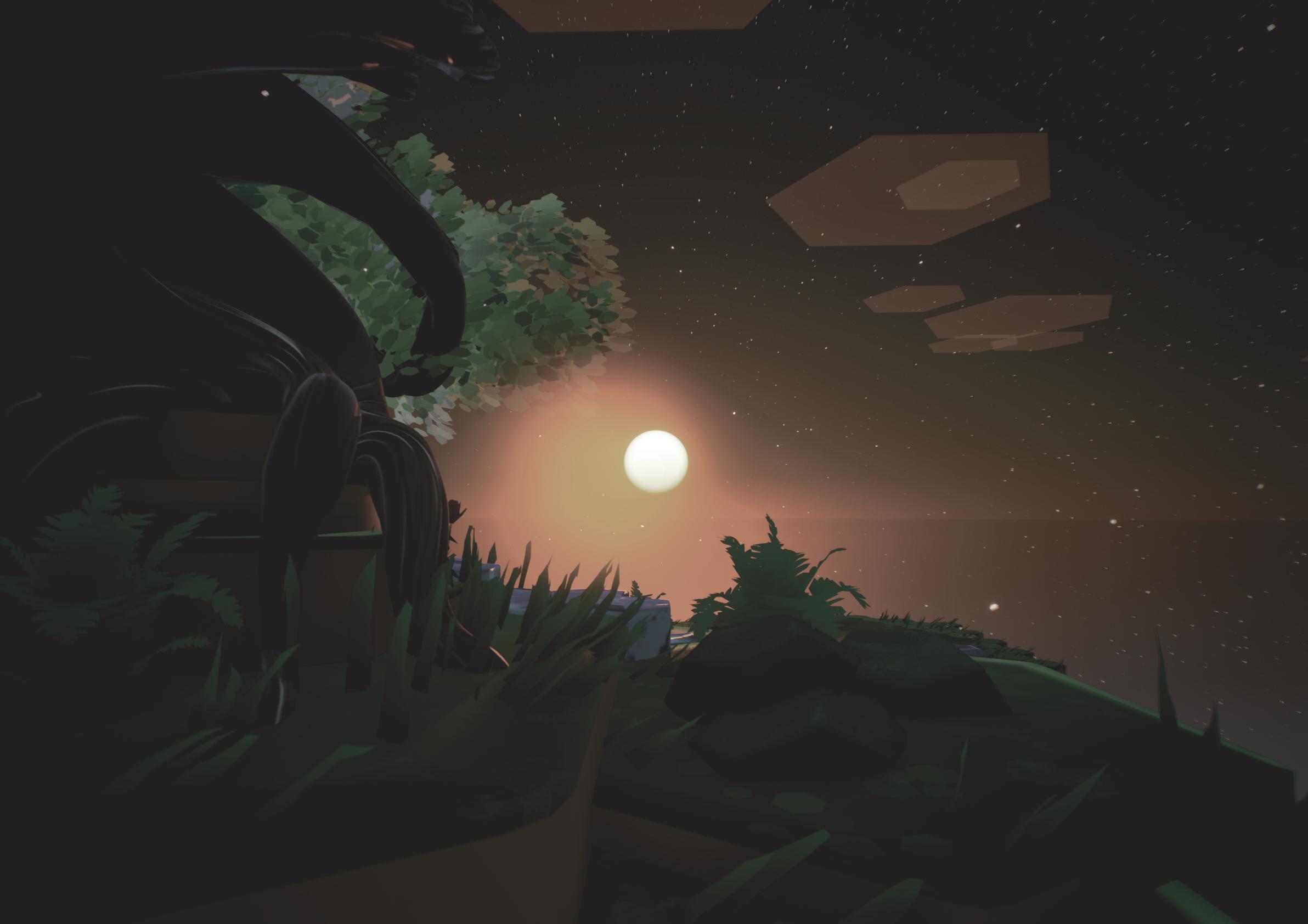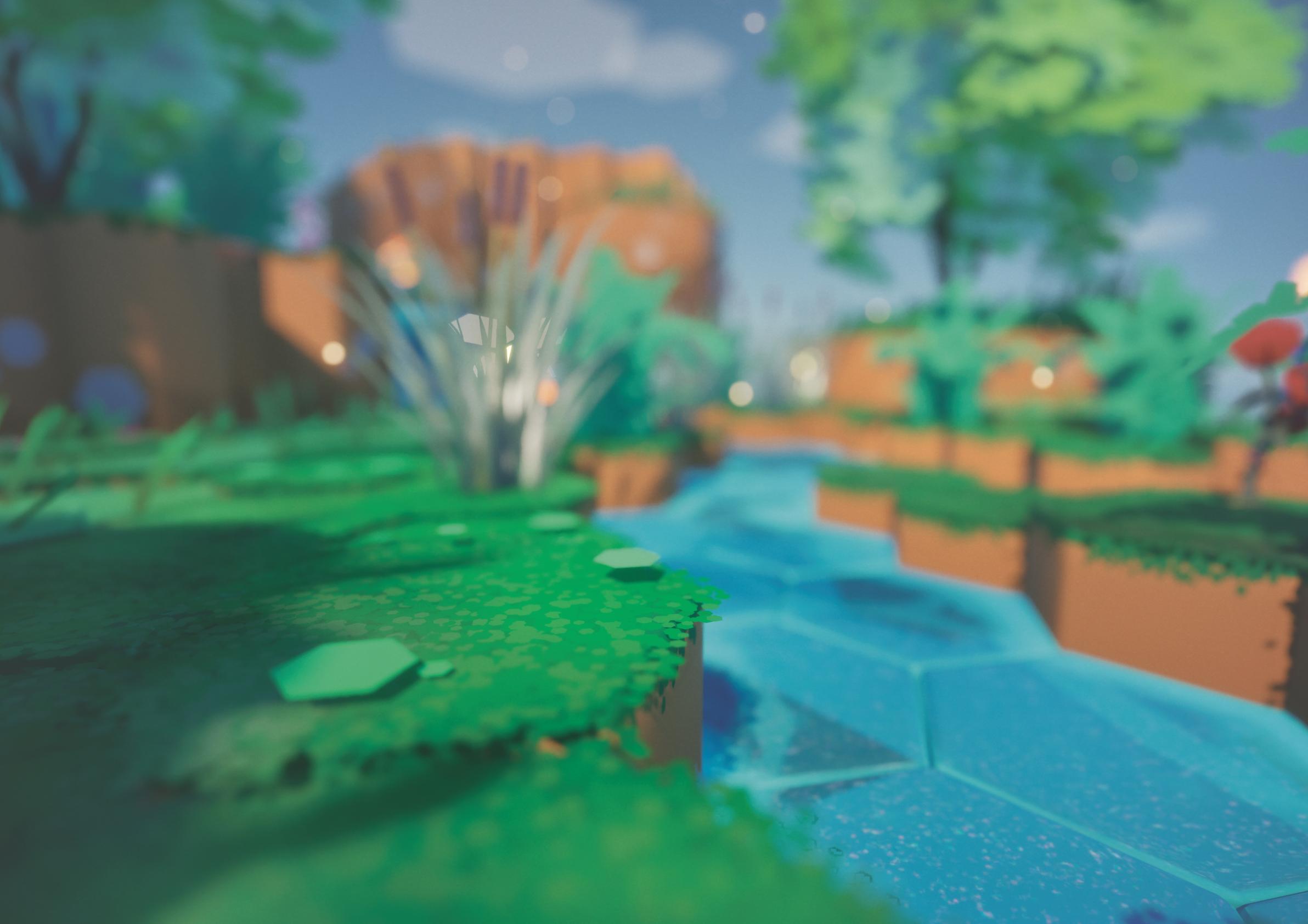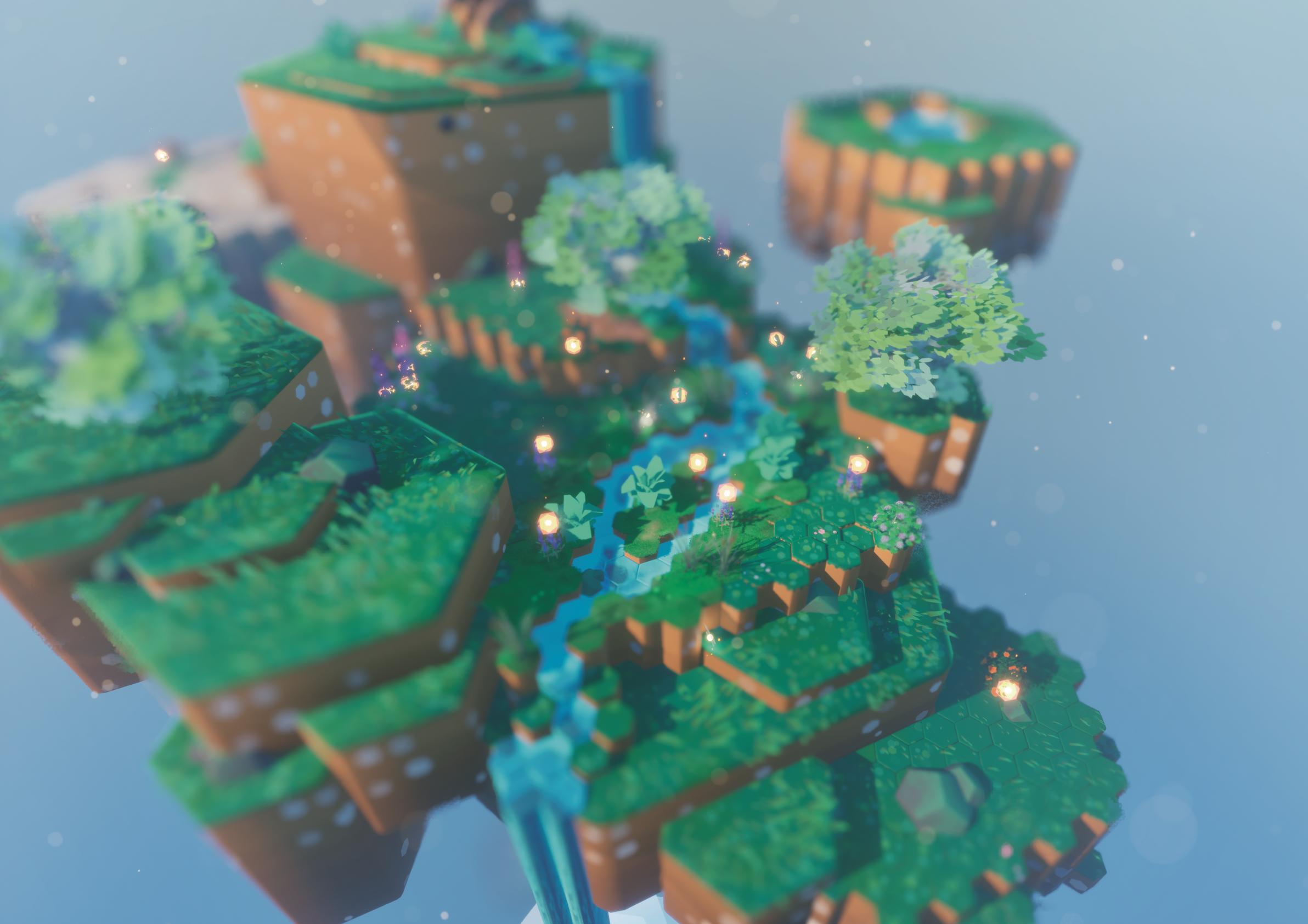Level Design
Level design was paramount to this project as my goal was to create a world not just as a game environment, but as a versatile canvas. To ensure the meta game remained engaging, I knew a uniform or repetitive landscape wouldn't suffice.
The core philosophy of ZenGarden draws deeply from Japanese culture, which profoundly shaped the island’s design. Inspired by traditional Japanese gardens, a direct influence reflected in the game's title, I incorporated motifs and principles from this rich artistic heritage.
The entire game unfolds within a limited setting: a collection of islands echoing the Japanese creation myth, where an archipelago emerged from the sea.

The complex is built according to the plans of a feudal Japanese city, with the central island flanked by land formations and featuring the largest tree in the game's universe in the background.
The central tree functions as an axis mundi, around which all other islands float. It can be likened to Yggdrasil, the tree from Norse mythology, whose role is to host the 9 worlds on its branches.
The tree also implies the positioning of the landmasses around a central point opens the door to a dynamic composition, around which players can rotate. The motivation behind this composition is that when people share their island with other players through the photography system, they’ll have more focal points for framing images. It also encourages diverse photographs from as many angles as possible. The complex of islands even offers a mini-cave for added variety.
Throughout ZenGarden’s landscape, subtle motifs derived from Japanese geomancy can be observed, reflecting a deep connection to cultural traditions. The river flows northeastward from the base of the central tree, descending towards the southwest, a sign of good luck in Japanese mithollogy.
While initially following a predetermined path, players possess the power to reshape its course, utilizing terrain manipulation tools to realize their own artistic visions. The world is constructed using hexagonal tiles representing earth or water, allowing for customizable garden layouts. Three trees of varying sizes are placed at the outset, echoing the significance of the number 3. The triad aids to the formation of a dynamic composition, as it is usual to use different sized elements.
The hexagon itself serves as a central motif throughout the graphics, shaping both the islands and the plants, a visual embodiment of the interplay between organic forms and mathematical precision. Japanese aesthetics favor contrast, and the hexagon embodies this principle, existing on the boundary between natural and mathematical order. Its unique ability to tessellate, cover a flat surface without gaps, distinguishes it from circles or pentagons, while its efficient perimeter-to-area ratio contributes to structural integrity, explaining why hexagonal patterns appear spontaneously in nature: from honeycombs and snowflakes to basalt formations.
This inherent characteristics led to the widespread use of hexagons for texturing within ZenGarden. When three-dimensional forms were required, the dodecahedron, a shape composed of twelve pentagons, was employed, acknowledging that solely using hexagons makes it impossible to construct complete 3D objects. The scattered stones across the map are themselves stylized dodecahedra, often exhibiting subtle deformations that add character and visual interest.
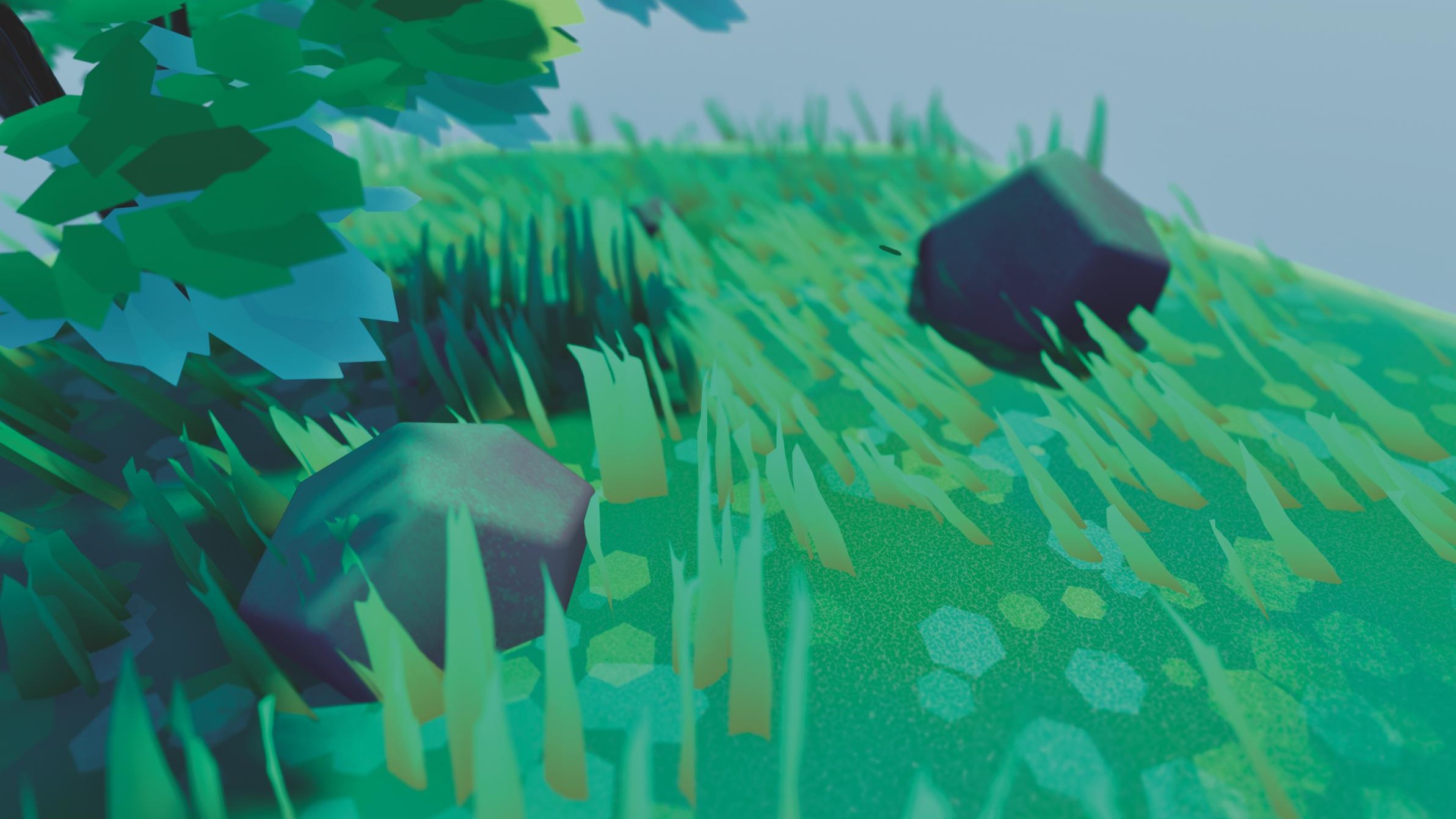
ZenGarden features a day/night cycle designed to showcase the island complex in a range of captivating lighting conditions. Players can witness breathtaking sunrises, where warm light gradually illuminates the landscape, or experience tranquil nights, which darken the environment and cast a cool glow.


